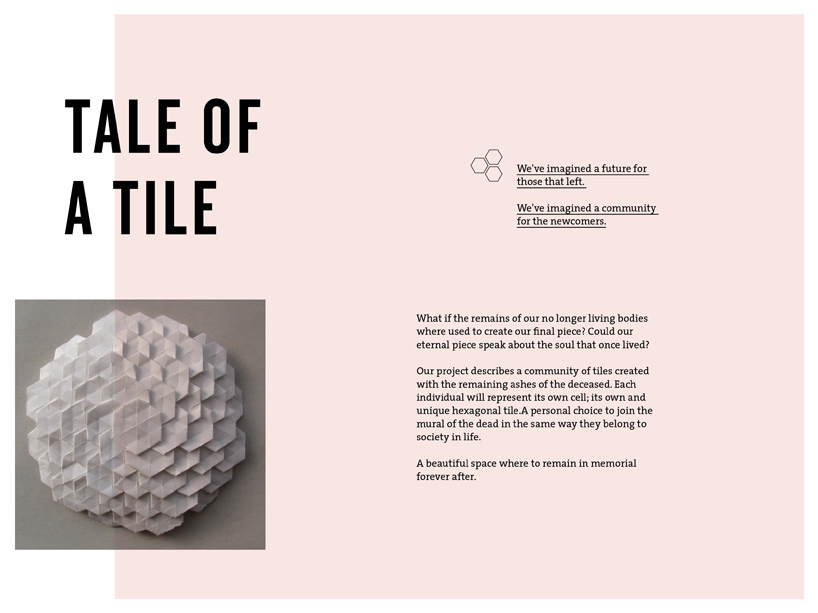
tale of a tile by tale of a tile from italy
designer's own words:
Tale of a Tile
- We've imagined a future for those that left.
We've imagined a community for the newcomers.
What if the remains of our no longer living bodies where used to create our final piece?
Could our eternal piece speak about the soul that once lived?
Our project describes a community of tiles created with the remaining ashes of the deceased.
Each individual will represent its own cell; its own and unique hexagonal tile.
A personal choice to join the mural of the dead in the same way they belong to society in life.
A beautiful space where to remain in memory forever.
Tiles are part of culture
- The axis and principal mood for the development of the project finds its inspiration in the tile as a central element from a cultural, social and technological point of view. An object that has made its contributions in architecture, interiorism or decorative arts assuming different meanings (symbolic; narrative; religious or not) for societies throughout history.
Tiles as structural compositions for life
, a tile was never designed to live by its own, it will only make sense whenever surrounded by others. In the same way as the tile, the human being lives in society because it becomes almost a necessity.
Every structure in life is built in similar compositions; from the atom to the molecule; from skin's cells to the building blocks of a house. Tiling is everywhere and belongs to nature.
New procedure for the after-life -
This project faces the issue of the death with a renewed spirit, going beyond the stablished barriers; allowing the ones that remain to chose between sharing the object of his missing beloved in community or, on the other hand, to take it home for a privacy.
The project is conceived to bring together the ashes of the dearly departed into the dough that will be used to make the tile. However, any desired belonging of the person can be also embedded into the constructing mixture (epoxy resin, enamel, clay, glass.. are just a few of the possible materials that can be used.
Placing the tiles side by side, commemorative murals or floors can be created, bringing life to a whole. Offering a new view of the after-death that differs from the conventional cemeteries to which we are used to and that are normally associated to the opposite feelings (coldness and loneliness).
The tile represents a white canvas capable of portraying the one that went.
The Hexagon -
Once again, it would have to be said that hexagons pertain indisputably to human culture, religion, history, and other symbolic concerns, though there are many fascinating instances of hexagonality and sixness in these areas, however, only some of its interesting and specific mathematical characteristics will be explained for this project.
The hexagon its a polygon of six edges and six vertices. It is one of the only three regular polygons to tessellate the Eucledian plan (along with squares and triangles), therefore the highest-sided tessellable regular polygon.
Because its vertices do not merge in a parallel way, compositions generated by hexagons will be structurally stronger than those made by the other two polygons.
Hexagonal tessellation is topologically identical to the close packing of circles on a plane. However, hexagons expand in tessellation using all the space without leaving any room and increasing its internal area when compared to similar structures made by squares or triangles (for a same perimeter). That's why bees will produce hexagonal cells rather than squared or triangular ones.
'Six degrees of separation'
theory could be perfectly explained by the tiles connective network: each hexagonal tile will connect to another six surrounding tiles. Those who were part of a society in life will be part of this community in death. Hand by hand; ashes to ashes; dust to dust.
1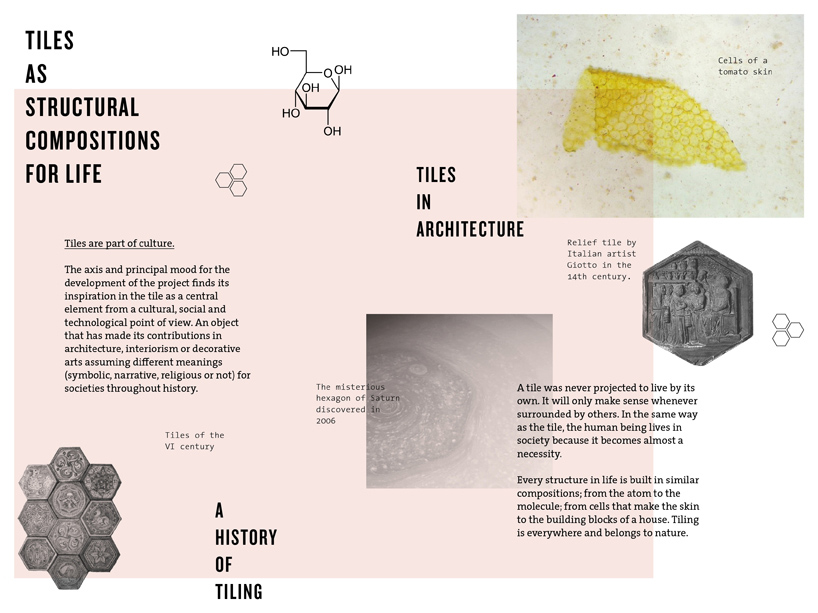 2
2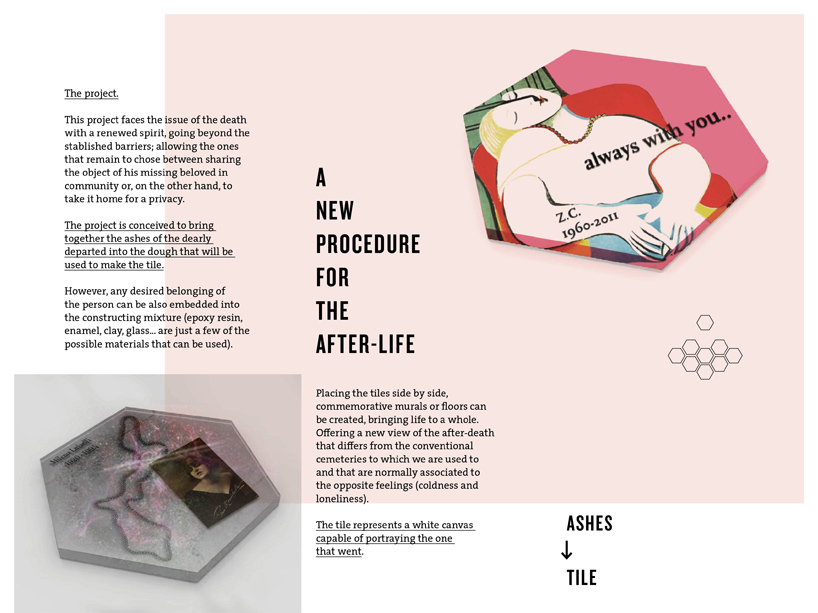 3
3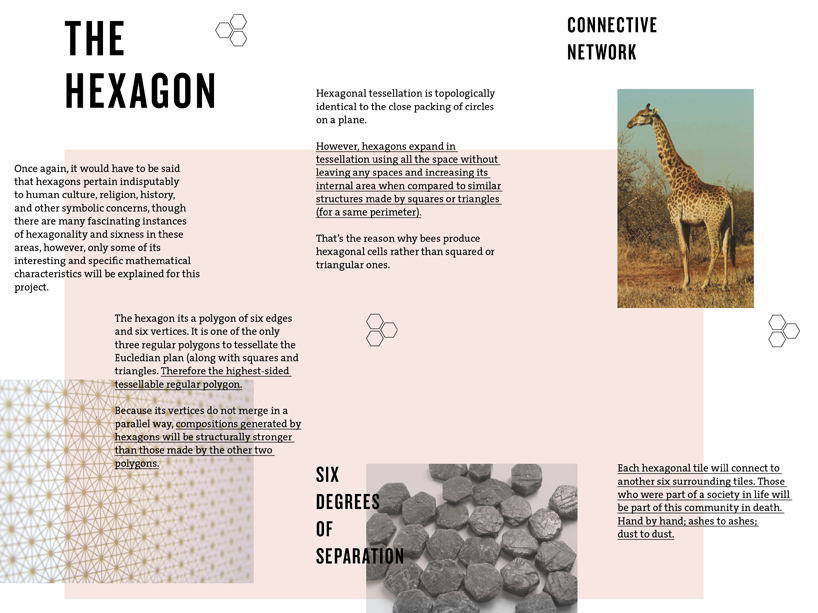 4
4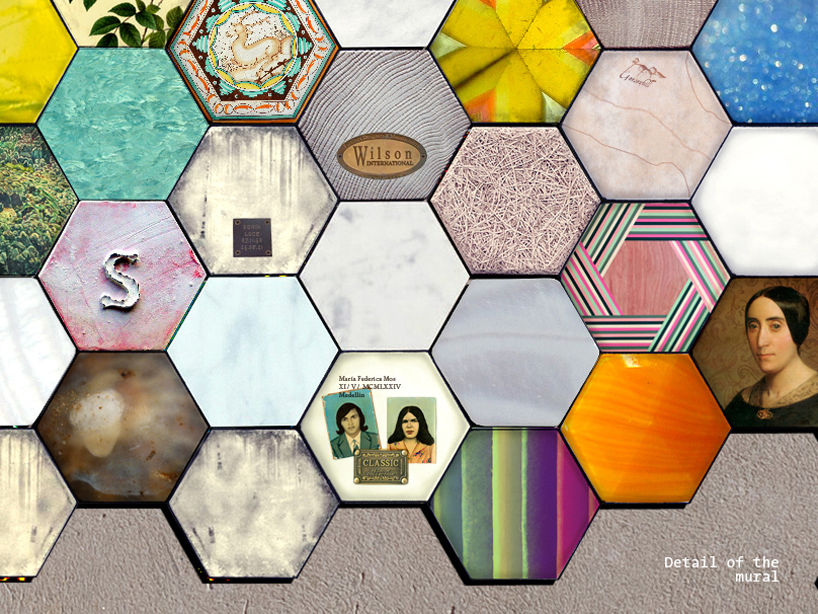 5
5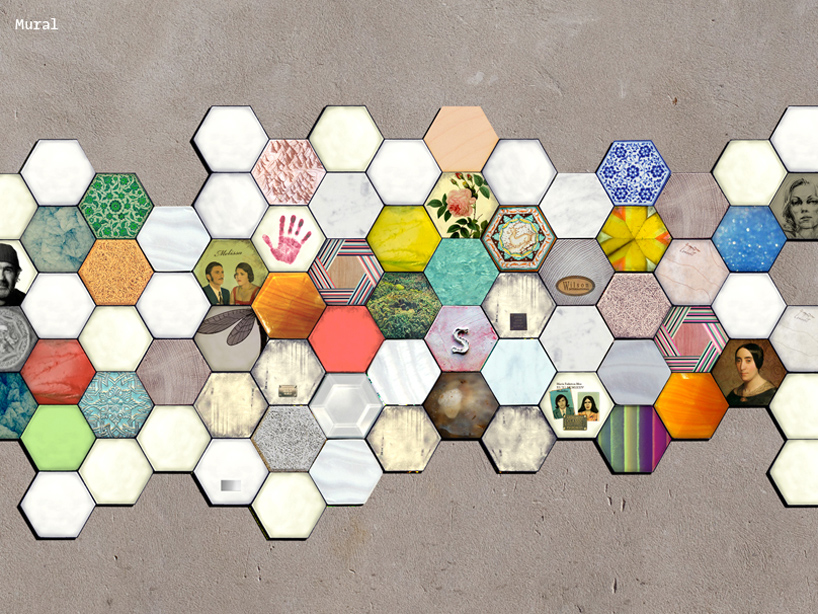 6
6